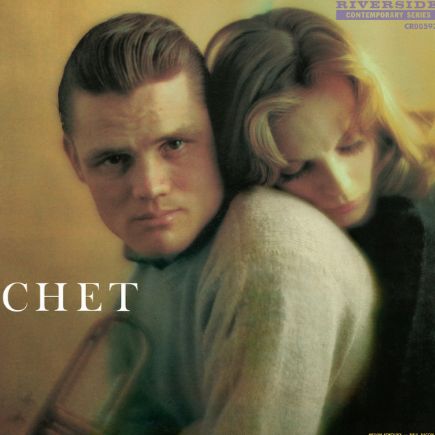If You Could See Me Now: élégie bebop et transition historique
Composée en 1946 par le pianiste Tadd Dameron, figure essentielle du bebop, If You Could See Me Now marque un tournant dans l’histoire du jazz vocal. Créée pour Sarah Vaughan, fidèle collaboratrice du compositeur, la chanson bénéficie également de paroles signées Carl Sigman et, en partie, de Vaughan elle-même. Dès les premières mesures, elle impose un climat intime et suspendu, porté par une mélodie enveloppante et une écriture harmonique d’une rare sophistication.
Dameron, influencé par les compositeurs classiques européens autant que par les pionniers du jazz moderne, tisse ici une trame sonore à la fois élégante et émotive, où chaque accord semble chargé d’un profond sentiment de nostalgie. Ce qui distingue ce morceau, c’est cette alliance subtile entre lyrisme expressif et complexité structurelle — un équilibre parfaitement incarné par l’interprétation de Vaughan, à la fois retenue, audacieuse et bouleversante.
If You Could See Me Now incarne un moment charnière : celui du passage du swing au bebop. Dans l’Amérique de l’après-guerre, une nouvelle génération de musiciens s’affranchit des conventions du swing pour inventer un langage plus libre, plus nerveux, plus personnel. Dameron s’inscrit pleinement dans ce mouvement, proposant ici une œuvre qui conjugue innovation harmonique et sensibilité mélodique.
Chet Baker: le lyrisme à l’épreuve du temps
Enregistrée à New York le 30 décembre 1958 pour l’album Chet, l’interprétation de If You Could See Me Now par Chet Baker marque une étape introspective dans son parcours artistique. Moins connue que ses ballades emblématiques du début des années 1950, cette version révèle une facette plus grave et nuancée du trompettiste, à un moment où sa vie personnelle et sa trajectoire musicale commencent à s’assombrir.
If You Could See Me Now est l’une des grandes ballades du répertoire moderne, souvent associée à Sarah Vaughan, à qui elle fut dédiée. Dans les mains de Baker, elle devient une méditation instrumentale tout en retenue, portée par un phrasé délicat, étiré, presque mélancolique. La voix est absente, mais la trompette chante avec une humanité poignante.
L’arrangement, soutenu par un quintette new-yorkais de haut niveau — avec Pepper Adams (saxophone baryton), Herbie Mann (flûte), Bill Evans (piano), Paul Chambers (basse) et Connie Kay (batterie) — s’inscrit dans une esthétique plus sombre, plus introspective que celle de la côte Ouest. Le jeu de Baker s’y fait plus lent, plus pesé, parfois à la limite de la rupture. Chaque note semble hésiter entre silence et souffle, traduisant une tension intérieure palpable.
If You Could See Me Now: elegía bebop y transición histórica
Compuesta en 1946 por el pianista Tadd Dameron, figura esencial del bebop, If You Could See Me Now marca un punto de inflexión en la historia del jazz vocal. Creada para Sarah Vaughan, habitual colaboradora del compositor, la canción cuenta también con letra de Carl Sigman y, en parte, de la propia Vaughan. Desde los primeros compases, establece una atmósfera íntima y suspendida, sostenida por una melodía envolvente y una escritura armónica de excepcional sofisticación.
Dameron, influido tanto por los compositores clásicos europeos como por los innovadores del jazz moderno, teje aquí una textura sonora elegante y emotiva, en la que cada acorde parece cargado de una profunda nostalgia. Lo que distingue a esta pieza es su sutil equilibrio entre lirismo expresivo y complejidad estructural, encarnado con perfección en la interpretación de Vaughan: contenida, audaz y conmovedora.
If You Could See Me Now representa un momento clave: el paso del swing al bebop. En la América de la posguerra, una nueva generación de músicos buscaba liberarse de las convenciones del swing para explorar un lenguaje más libre, más nervioso y más personal. Dameron se inscribe de lleno en esta dinámica, ofreciendo aquí una obra que combina innovación armónica con una intensa sensibilidad melódica.
Chet Baker: el lirismo a prueba del tiempo
Grabada en Nueva York el 30 de diciembre de 1958 para el álbum Chet, la interpretación de If You Could See Me Now por Chet Baker marca una etapa introspectiva en su recorrido artístico. Menos conocida que sus baladas emblemáticas de principios de los años cincuenta, esta versión revela una faceta más grave y matizada del trompetista, en un momento en que su vida personal y su trayectoria musical comenzaban a oscurecerse.
If You Could See Me Now es una de las grandes baladas del repertorio moderno, a menudo asociada a Sarah Vaughan, a quien fue originalmente dedicada. En manos de Baker, se convierte en una meditación instrumental cargada de contención, sostenida por un fraseo delicado, extendido, casi melancólico. No hay voz, pero la trompeta canta con una humanidad conmovedora.
El arreglo, respaldado por un quinteto neoyorquino de alto nivel —con Pepper Adams (saxo barítono), Herbie Mann (flauta), Bill Evans (piano), Paul Chambers (contrabajo) y Connie Kay (batería)— se inscribe en una estética más oscura e introspectiva que la del jazz de la costa oeste. El juego de Baker es más lento, más meditado, a veces al borde de la ruptura. Cada nota parece oscilar entre el silencio y el aliento, reflejando una tensión interior palpable.
If You Could See Me Now: elegia bebop e svolta storica
Composta nel 1946 dal pianista Tadd Dameron, figura centrale del bebop, If You Could See Me Now segna una svolta nella storia del jazz vocale. Scritta per Sarah Vaughan, collaboratrice abituale del compositore, la canzone porta anche la firma di Carl Sigman e, in parte, della stessa Vaughan. Fin dalle prime battute, impone un’atmosfera intima e sospesa, sostenuta da una melodia avvolgente e da una scrittura armonica di rara raffinatezza.
Dameron, influenzato sia dai compositori classici europei che dai pionieri del jazz moderno, tesse qui una trama sonora elegante ed emotiva, in cui ogni accordo sembra carico di un profondo senso di nostalgia. Ciò che distingue questo brano è l’equilibrio sottile tra lirismo espressivo e complessità strutturale — un equilibrio incarnato alla perfezione dall’interpretazione di Vaughan, al tempo stesso misurata, audace e toccante.
If You Could See Me Now rappresenta un momento cruciale: il passaggio dallo swing al bebop. Nella società americana del dopoguerra, una nuova generazione di musicisti si emancipa dalle convenzioni dello swing per esplorare un linguaggio più libero, nervoso e personale. Dameron aderisce pienamente a questo spirito, offrendo un’opera che coniuga innovazione armonica e sensibilità melodica.
Chet Baker: il lirismo messo alla prova del tempo
Registrata a New York il 30 dicembre 1958 per l’album Chet, l’interpretazione di If You Could See Me Now da parte di Chet Baker segna una fase introspettiva del suo percorso artistico. Meno nota rispetto alle sue ballate iconiche dei primi anni ’50, questa versione rivela un lato più grave e sfumato del trombettista, in un periodo in cui la sua vita personale e la sua carriera musicale iniziavano a oscurarsi.
If You Could See Me Now è una delle grandi ballate del repertorio moderno, spesso associata a Sarah Vaughan, alla quale fu originariamente dedicata. Nelle mani di Baker, diventa una meditazione strumentale carica di discrezione, sostenuta da un fraseggio delicato, disteso, quasi malinconico. La voce è assente, ma la tromba “canta” con un’umanità struggente.
L’arrangiamento, affidato a un quintetto newyorkese di altissimo livello — con Pepper Adams (sax baritono), Herbie Mann (flauto), Bill Evans (pianoforte), Paul Chambers (contrabbasso) e Connie Kay (batteria) — si inserisce in un’estetica più scura e introspettiva rispetto a quella della West Coast. Il suono di Baker è più lento, più ponderato, a volte sul punto di spezzarsi. Ogni nota sembra oscillare tra silenzio e respiro, rivelando una tensione interiore palpabile.
If You Could See Me Now: bebop elegy and historical turning point
Composed in 1946 by pianist Tadd Dameron, a key figure in bebop, If You Could See Me Now marks a turning point in the history of vocal jazz. Written for Sarah Vaughan, Dameron’s frequent collaborator, the song features lyrics by Carl Sigman and, in part, by Vaughan herself. From the opening bars, it creates an intimate, suspended atmosphere, shaped by an enveloping melody and a remarkably sophisticated harmonic design.
Dameron—deeply influenced by both European classical composers and the avant-garde jazz innovators of his time—weaves a sonic fabric that is at once elegant and emotional, where every chord seems infused with longing and nostalgia. What sets this piece apart is its delicate balance between expressive lyricism and structural complexity, a balance Vaughan embodies with restraint, boldness, and deep emotional power.
If You Could See Me Now captures a pivotal moment: the shift from swing to bebop. In postwar America, a new generation of musicians sought to break free from swing’s conventions to explore a more personal, restless, and harmonically adventurous language. Dameron fully embraced this movement, offering here a work that fuses harmonic innovation with melodic sensitivity.
Chet Baker: lyricism tested by time
Recorded in New York on December 30, 1958 for the album Chet, Chet Baker’s rendition of If You Could See Me Now marks an introspective chapter in his artistic journey. Less known than his iconic ballads from the early 1950s, this version reveals a more solemn and nuanced side of the trumpeter—at a time when his personal life and musical direction were entering a darker phase.
If You Could See Me Now is one of the great modern ballads, often associated with Sarah Vaughan, for whom it was originally written. In Baker’s hands, it becomes a restrained instrumental meditation, carried by a delicate, drawn-out, and almost melancholic phrasing. There is no voice, yet the trumpet sings with poignant humanity.
The arrangement, supported by a top-tier New York quintet — Pepper Adams (baritone sax), Herbie Mann (flute), Bill Evans (piano), Paul Chambers (bass), and Connie Kay (drums) — leans toward a darker, more introspective aesthetic than the West Coast sound. Baker’s playing here is slower, more deliberate, sometimes verging on fragility. Each note seems to hesitate between silence and breath, expressing a palpable inner tension.


